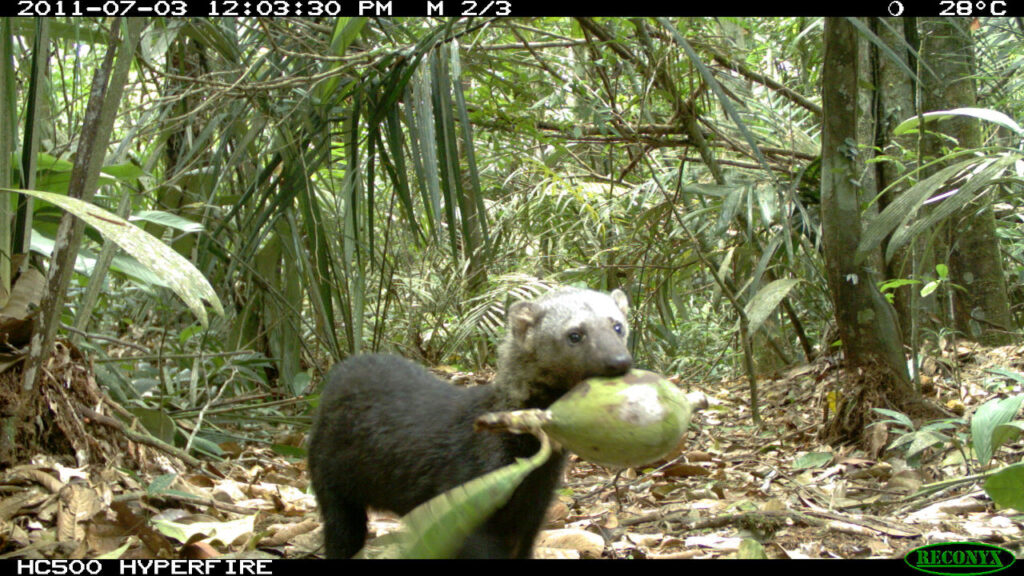What are the consequences of deforestation and tropical forest degradation on ecosystems?
An international team of researchers from the AMAP laboratory (Botany and Modeling of Plant and Vegetation Architecture) of the University of Montpellier and INRAE has investigated the consequences of deforestation and degradation of tropical forests. The study, published in the journal Nature Ecology & Evolution on December 10, identified "winning" and "losing" species, leading to the functional impoverishment of tropical forest ecosystems.

Dominance of opportunistic species
This work highlights a depletion of so-called functional diversity caused by deforestation and habitat degradation, generalized across six major regions of Amazonia and Atlantic forests. The results show that landscape-scale habitat loss and local degradation of tropical forests lead to similar tree species changes in different biogeographical, climatic and land-use contexts. "We find that these anthropogenic pressures result in the dominance of so-called "opportunistic" species, which typically exhibit rapid growth with low wood density, high fecundity and high dispersal capacity with small seeds consumed by small, mobile vertebrates such as birds or bats," explains Bruno X. Pinho, first author of the work and post-doctoral fellow at the University of Montpellier within the UMR AMAP (now at the University of Bern). On the other hand, the authors find that other species characteristics underpin significant vulnerability to landscape fragmentation, such as the production of large seeds, whose dispersal depends on large animals and whose germination is physiologically constrained.
Risks to essential ecosystem services in the tropics
"These functional replacements have serious implications that urgently need to be quantified. They suggest possible deterioration of essential ecosystem processes and their contributions to human populations, notably through changes in biogeochemical cycles - particularly carbon - but also in fauna-flora interactions and forest regeneration", explains Felipe Melo, second author of the study and researcher at the Federal University of Pernambuco in Brazil (now Nottingham Trent University). The study underscores the urgent need to step up tropical forest conservation and restoration in order to preserve these vital ecosystems. "The strong influence of forest degradation in certain Amazonian regions demonstrates the importance of combating forest disturbances, such as selective logging and fires, as well as deforestation", stresses Professor Jos Barlow, from Lancaster University.
Tropical forests are the world's largest reservoir of terrestrial biodiversity. They play a major role in global biogeochemical cycles and provide essential ecosystem services. Yet they are victims of rapid deforestation and fragmentation, with the loss of 3 to 6 million hectares per year over the last two decades. A large proportion of today's tropical forests are thus found in landscapes modified by man and exposed to local disturbances such as logging, hunting and fire.
"There is a broad consensus on the negative impact of habitat loss on biodiversity, but the independent effects of landscape fragmentation and local disturbance are still poorly understood and much debated, not least because of the difficulty of disentangling cause-effect relationships on the one hand and non-causal associations on the other," explains David Bauman, IRD research fellow at the AMAP laboratory and co-author of the study. Some studies report a positive effect of fragmentation, others a negative one. These effects, which are often weak, are documented exclusively in terms of the number of species. Yet a low impact on species numbers may conceal the replacement of several species by others with different ecological strategies, with significant consequences for the diversity and functioning of these ecosystems. "Understanding these changes and distinguishing causality from non-causal associations is crucial to guiding management of fragmented landscapes that preserves these ecosystems and their diversity," David points out.
The study is based on a unique dataset, integrating inventories of 271 forest plots distributed within six anthropized regions of Amazonia and Brazilian Atlantic forests, characterizations of landscape patterns in these regions, as well as morphological and functional characteristics of wood, leaves and seeds of 1207 tropical tree species. Using statistical models, it was possible to break down the direct and indirect causal effects of habitat loss, fragmentation and local degradation on the functional composition of forests. Finally, it was possible to identify "winning" and "losing" species with converging traits in different regional contexts.
Practical information
- Publication date: December 10, 2024
- The complete study
- Find out more about the Amap laboratory